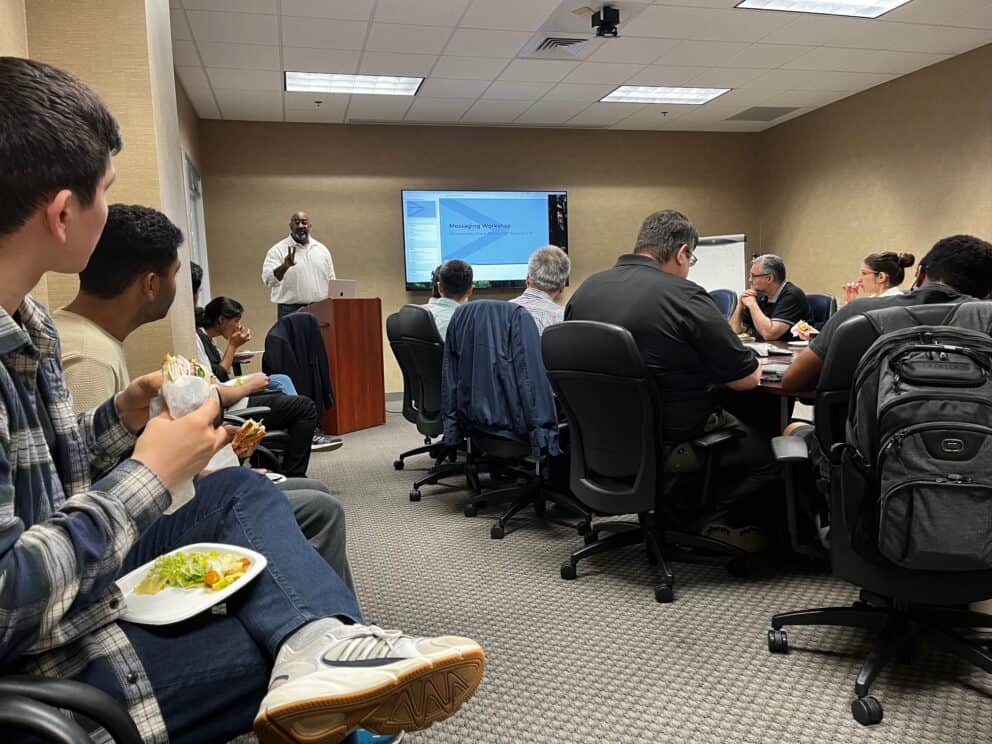
Explaining technical research can be difficult—unless you learn to think like a second grader. That was the key advice from Frank Pollock, Chief Marketing Officer for Home Lending Pal and BlueRecruit, and an Entrepreneur in Residence for NC IDEA.
At a recent communications workshop hosted at NC State’s FREEDM Center, Pollock guided students, faculty, and entrepreneurs through a series of exercises designed to help them translate complex research into plain, accessible language. He opened the session with a story about his physicist uncle, who once tried to explain the moon landing to young Frank—using language that was far too technical for a second grader to understand.
The workshop was designed to help participants improve their applications to NCInnovation, a North Carolina initiative that provides grant funding to help public university research transition from academia to industry. Attendees worked in pairs to practice their research pitches and receive feedback from Frank and each other.
Among the participants were Dr. Richard Kim, a faculty member in Civil Engineering at NC State, and Dr. Noor Saleh, co-founders of Continuum Infrastructure Solutions. They’ve developed a novel method for testing asphalt pavement, along with a comprehensive database of asphalt recipes tailored for different regions and use cases—ranging from racetracks to rural roads and high-traffic interstates. Their technical pitch was boiled down to a simple phrase: “The right asphalt for the right application.”
Another attendee, Juwon Ajayi, a graduate student at FREEDM, refined his research summary to: “Harnessing river energy for remote villages.”
Pollock emphasized that most reviewers of grant applications are not subject matter experts. His advice: start simple, and add complexity only when necessary. He also encouraged attendees to craft clear, compelling stories that illustrate the real-world impact of their work.
FREEDM extends its thanks to the NCInnovation team for hosting the event and appreciates the valuable insights shared during the session.
